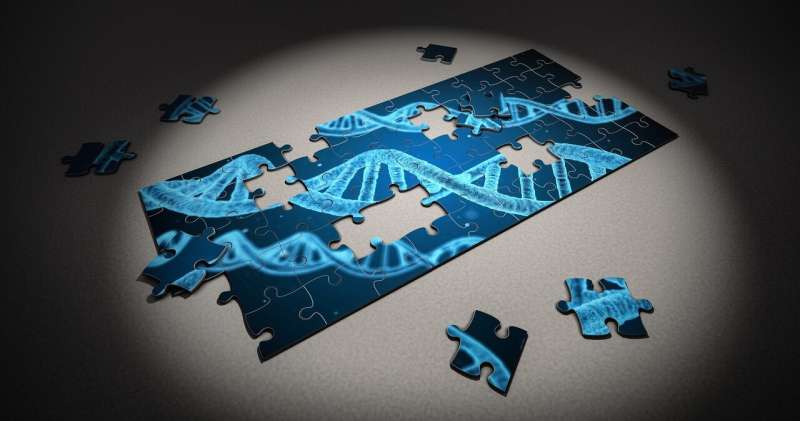Credit: CC0 Public Domain
Researchers of the RUDN Medical Institute have identified the genes controlling the process of liver regeneration—they "instruct" hepatocyte cells, which comprise 80 percent of the liver, to divide. The results of the study will contribute to the development of new methods of liver regeneration in patients with chronic hepatitis, sclerosing cholangitis, as well as those who had liver resection for cancer or other conditions. The article is published in Cell Biology International.
Hepatocytes are responsible for the key liver functions: the removal of toxic substances, and the synthesis and storage of proteins and cholesterol. In a healthy organ unaffected by pathological processes, hepatocytes are in a resting state. In case of injury or partial liver resection, hepatocytes start to divide rapidly. This allows for a successful liver regeneration, even from as little as a quarter of remaining tissue.
Problems with liver regeneration are observed in patients with several chronic diseases, chronic hepatitis, sclerosing cholangitis, and also after extensive resections, when less than a quarter of the organ remains. In addition, previous experiments showed that hepatocytes begin to divide not immediately after liver damage, but with a delay of up to two days, which can negatively affect the patient's chances to recover.
Timur Fathudinov, professor of the Department of Histology, Cytology and Embryology of the RUDN Medical Institute, and his colleagues sought to identify the key genes that control the hepatocyte division process and the mechanisms that are responsible for the delay in regeneration.
To identify the molecular mechanisms that trigger the appearance of new hepatocytes, the researchers conducted an experiment on rats. They removed 80 percent of the rodents' liver and tracked the substances it secreted, and determined the genes that were activated. The completeness of regeneration was assessed by measuring liver mass and verifying the efficiency of the cells using tests—evaluating the amount of the alanine aminotransferase (ALT) enzyme in the blood. The presence of ALT means that the cells are not working.
By measuring gene activity, RUDN doctors found that the onset of hepatocyte division was accompanied by the activation of the Rb1 gene, which prevented excessive cell growth so the body can save energy for cell division. After 24 hours, the gene activity decreased. On the other side, the activity of the E2F1 gene, which corresponds to cell self-division, was initially reduced, and after 24 hours after removal of the liver, its activity increased.
The researchers also learned that the met gene was activated six hours after the operation, which triggered the synthesis of HGF hepatocytes growth factor. However, its activity is also reduced from 12 to 48 hours after surgery. Therefore, the researchers have identified a complete set of mechanisms that slow down or accelerate liver regeneration, which will help to create new drugs and techniques for liver regeneration in case of hepatitis, as well as after partial liver resection.
More information: Andrey Elchaninov et al. Inherent control of hepatocyte proliferation after subtotal liver resection, Cell Biology International (2019). DOI: 10.1002/cbin.11203
Provided by RUDN University























